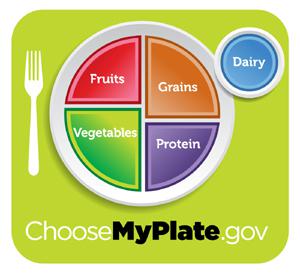
Celebrating National Nutrition Month
Before you eat, think about what goes on your plate or in your bowl. Foods like vegetables, fruits, whole grains, low-fat dairy products and lean protein foods contain the nutrients you need without too many calories. Over the day, include foods from all the food groups. Try the following tips to “Get Your Plate in Shape.”
While there continue to be many fad diets that claim to help people lose weight and stay healthy, the best approach is to eat a variety of foods from different food groups. Staying away from processed foods is also a good idea. Foods with the fewest number of ingredients are usually the best for you to eat. Here are the top five nutrition tips to stay healthy and prevent disease:
- Eat your fruits and vegetables: Mom was right, fruits and veggies are the keys to a healthy diet. These provide the vitamins, minerals and fiber that are important for good health. Most fruits and vegetables are naturally low in fat and calories. These can help you lose weight and may reduce the risk of cancer and other chronic diseases.
- Eat a variety of lean proteins: Protein is good for providing energy but many cuts of
meat have too much saturated fat, which can lead to heart disease. Choose lean cuts of
beef and poultry and eat more fish—aim for two servings per week. Beans are also a great
low-fat source of protein. - Don’t forget whole grains: Whole grains include wheat, corn, rice, oats and barley. These provide nutrients like fiber and some have been proven to lower cholesterol.
- Choose low-fat or nonfat dairy: Dairy provides much needed calcium but
low-fat options are best. - Avoid too much sodium or added sugars: Too much sodium and sugar is linked to a variety of diseases, including heart disease and diabetes.
So you’ve got the food groups down, but how do you know how much of each one to eat every day?
Here’s what your plate should look like at each meal:
- The first section of the plate is the protein. This should account for ¼ of your plate.
- The second section is grains. This should account for another ¼ of your plate. Make at least half
of your grain choices whole grains. - The other ½ of the plate should consist of fruits and vegetables. Choose a variety.
- Finally, there is a small portion of dairy and this should be low fat or nonfat.
For more information, visit: www.eatright.org. Source: The Academy for Nutrition and Dietetics

